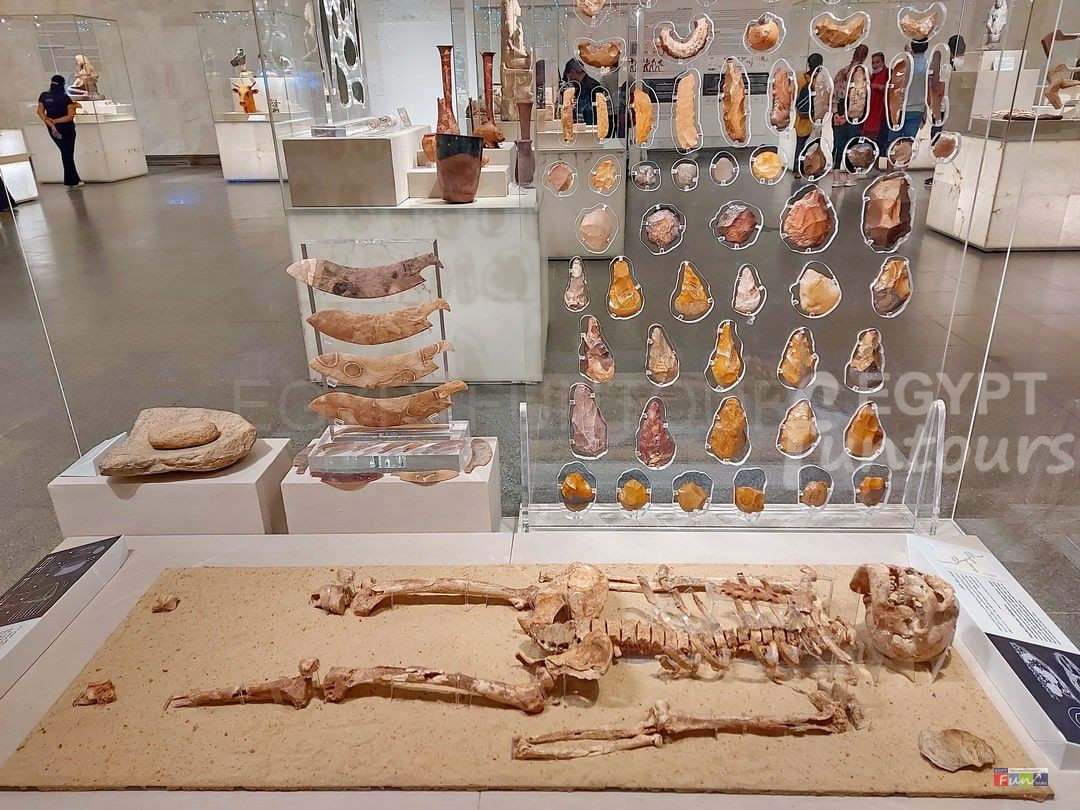Prehistoric Artifacts at NMEC Museum
Prehistoric period artifacts in the National Museum of Egyptian Civilization from 35000 Years Ago, since man lived in caves and rock shelters, prehistory has witnessed the evolution of humans and their experiences. As a scavenger and hunter, the prehistoric man fashioned stone tools to assist him in meeting his requirements and protect him from harm. Egypt has the world’s earliest known handmade lithic tools, which date back more than two million years. These artifacts support the existence of humans in Egypt, as the route used by human migrations from Africa to the ancient world.
Man has relied on producing pebble tools from the Eolithic era, which have developed into stone hand-axes over time. According to the nature of the Flintstone’s use, artisans used to slice the edges to remove the flints from the core. The oldest traces of human existence on Egyptian soil may be found there. The earliest known skeleton in Egypt comes from the Qena Governorate, and it confirms the civic presence in Egypt from prehistoric times to the present.




























